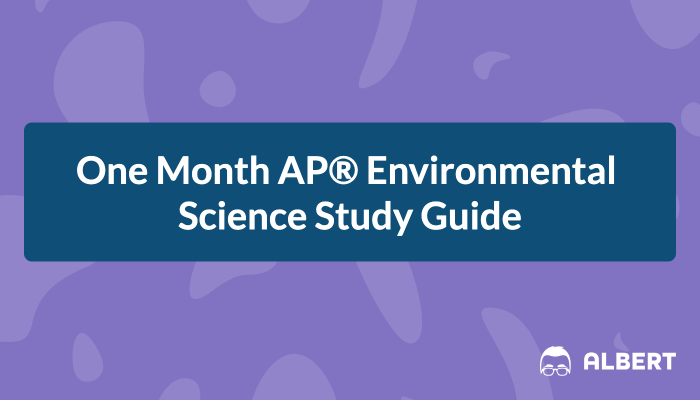Embark on a journey through the depths of environmental science with the AP Environmental Science Midterm Study Guide. This guide will navigate you through the intricate tapestry of Earth’s systems, unraveling the complexities of ecosystems, and delving into the pressing challenges of environmental pollution, climate change, and energy management.
As you delve deeper into this guide, you will discover the interconnectedness of our planet’s systems, the importance of biodiversity, and the profound impact of human activities on the environment. Prepare to engage with real-world examples, explore sustainable practices, and gain insights into the policies and regulations that shape our environmental stewardship.
1. Environmental Systems and Sustainability

Earth’s systems, including the atmosphere, hydrosphere, geosphere, and biosphere, are intricately connected and interdependent. Disruptions in one system can have cascading effects on the others, highlighting the need for a holistic approach to environmental management.
Sustainability
Sustainability refers to practices that meet the needs of the present without compromising the ability of future generations to meet their own needs. It involves balancing economic development, environmental protection, and social equity.
- Sustainable agriculture practices reduce environmental degradation and conserve biodiversity.
- Renewable energy sources, such as solar and wind power, minimize carbon emissions and mitigate climate change.
2. Ecosystems and Biodiversity
Ecosystems
Ecosystems are communities of living organisms and their physical environment. Different types of ecosystems exist, each with unique characteristics:
- Forests: Dominated by trees, provide habitat, regulate climate, and purify water.
- Grasslands: Open areas with grasses as the primary vegetation, support grazing animals and provide carbon storage.
- Aquatic ecosystems: Include oceans, lakes, and rivers, harbor diverse marine life and support human activities such as fishing.
Biodiversity
Biodiversity refers to the variety of life on Earth, including genetic diversity, species diversity, and ecosystem diversity. It plays a crucial role in ecosystem stability, resilience, and the provision of ecosystem services.
Threats to biodiversity include habitat loss, pollution, overexploitation, and climate change.
Conservation Efforts
Conservation efforts aim to protect biodiversity and maintain the health of ecosystems. Strategies include:
- Protected areas: Establishing national parks, wildlife refuges, and marine sanctuaries.
- Species conservation: Implementing recovery plans for endangered species and reducing threats to their survival.
- Habitat restoration: Restoring degraded habitats to support biodiversity and ecosystem function.
3. Environmental Pollution

Types of Pollution
Environmental pollution refers to the introduction of harmful substances into the environment. Major types include:
- Air pollution: Caused by the release of pollutants into the atmosphere, affecting human health and climate.
- Water pollution: Contamination of water sources with pollutants, degrading water quality and harming aquatic ecosystems.
- Soil pollution: Contamination of soil with chemicals or heavy metals, affecting plant growth and soil health.
Sources and Effects of Pollution
Pollution sources include industrial activities, transportation, agriculture, and household waste. Its effects can be severe:
- Human health impacts: Respiratory problems, cardiovascular disease, and cancer.
- Ecosystem damage: Loss of biodiversity, habitat degradation, and disruption of ecological processes.
- Economic consequences: Costs associated with healthcare, environmental cleanup, and reduced productivity.
Pollution Prevention and Control
Strategies for pollution prevention and control include:
- Emission controls: Installing pollution control devices in industrial facilities and vehicles.
- Waste management: Implementing waste reduction, recycling, and proper disposal practices.
- Sustainable agriculture: Reducing pesticide and fertilizer use, promoting soil conservation.
4. Climate Change: Ap Environmental Science Midterm Study Guide
Causes and Consequences
Climate change refers to long-term changes in global climate patterns, primarily caused by the release of greenhouse gases into the atmosphere. Its consequences include:
- Rising temperatures: Leading to heat waves, droughts, and sea level rise.
- Extreme weather events: Increased frequency and intensity of storms, hurricanes, and floods.
- Ocean acidification: Absorption of carbon dioxide by oceans, harming marine ecosystems.
Human Influence
Human activities, particularly the burning of fossil fuels, deforestation, and agriculture, contribute significantly to greenhouse gas emissions and climate change.
Potential Impacts, Ap environmental science midterm study guide
Climate change poses threats to ecosystems, human societies, and the economy:
- Ecosystem disruption: Loss of biodiversity, altered species distributions, and habitat destruction.
- Human health impacts: Heat-related illnesses, respiratory problems, and mental health issues.
- Economic consequences: Infrastructure damage, agricultural losses, and reduced tourism.
5. Energy and Natural Resources
Energy Resources
Energy resources can be classified into renewable and non-renewable sources:
- Renewable energy: Solar, wind, hydro, and geothermal power, which are replenished naturally.
- Non-renewable energy: Fossil fuels (coal, oil, natural gas), which are finite and take millions of years to form.
Environmental Impacts
Energy production and consumption have environmental consequences:
- Fossil fuel combustion: Releases greenhouse gases, air pollutants, and heavy metals.
- Renewable energy: Has minimal environmental impacts during operation, but may require land use and habitat modification.
Energy Conservation and Efficiency
Reducing energy consumption and improving efficiency can mitigate environmental impacts:
- Energy-efficient appliances: Reduce electricity consumption and lower energy bills.
- Building insulation: Minimizes heat loss and cooling requirements, saving energy.
- Public transportation: Reduces vehicle emissions and promotes sustainable commuting.
6. Environmental Policy and Law

Environmental Policy
Environmental policy involves regulations, laws, and incentives aimed at protecting the environment:
- Local: City and county ordinances on waste management, air quality, and land use.
- National: Environmental Protection Agency (EPA) regulations on air and water pollution, hazardous waste, and endangered species.
- International: United Nations Environment Programme (UNEP) promotes global cooperation on environmental issues.
Environmental Law
Environmental law provides the legal framework for enforcing environmental regulations and protecting the environment:
- Clean Air Act: Regulates air pollution from industries, vehicles, and other sources.
- Clean Water Act: Protects water quality by regulating wastewater discharge and water pollution control.
- Endangered Species Act: Protects endangered and threatened species and their habitats.
Challenges and Opportunities
Environmental policy and law face challenges and opportunities:
- Enforcement: Ensuring compliance with environmental regulations.
- International cooperation: Addressing global environmental issues.
- Technological advancements: Developing innovative solutions for environmental protection.
Questions Often Asked
What is the scope of the AP Environmental Science Midterm?
The midterm covers the first six units of the AP Environmental Science course, including environmental systems, ecosystems, biodiversity, pollution, climate change, and energy.
What types of questions can I expect on the midterm?
The midterm will include a variety of question types, including multiple choice, short answer, and essay questions.
How can I best prepare for the midterm?
Thoroughly review your class notes, textbook, and any additional materials provided by your teacher. Practice answering different types of questions and seek clarification on any concepts you find challenging.